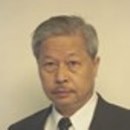Visual Evoked Potential Findings in Patients using Anti-Seizure Medicine
Author(s): Fatemeh Sarzaeim, Sanaz Abdolalizadeh, Seyed Mohammad Masoud Shushtarian, Ahmad Shojaei
Aim: Seizure is a strong shrinkage state of the skeletal muscle which is involuntary and occurs spasmodically. There are certain anti-seizure drugs such as Carbamazepine, Valproic acid and etc. used to control this illness. These drugs may affect the visual pathway, a part of the visual system. The aim of the present study is to look for probable side effects of anti-seizure medicine on visual pathway using visual evoked potential.
Patients and Methods: Twenty patients (10 male and 10 female) in the age range of 15 - 30 years were selected for the purpose of the present study. The patients were under anti-seizure treatment. VEP using two types of stimulators i.e., pattern reversal checkerboard and flash were tested in the total population. The VEP patterns obtained with two types of stimulators were compared between case & control groups to reach for suitable stimulation techniques to record VEP.
Results: There was no statistical difference regarding demographical specifications i.e., sex and age whereas the difference in the case of BCVA was significant. (P < 0.001) There was a significant increase in latency and decrease in amplitude of VEP, P100 peak between patients and healthy groups (P < 0.001) considering two types of stimulation techniques.
Conclusion: In patients using anti-seizure medicine for treatment visual pathway may be affected which can be diagnosed by VEP. For this purpose, two types of routine stimulators should be used to record VEP in patients to reach suitable and accurate results necessary for clinical purposes.


 Impact Factor: * 1.2
Impact Factor: * 1.2 Acceptance Rate: 79.45%
Acceptance Rate: 79.45%  Time to first decision: 10.4 days
Time to first decision: 10.4 days  Time from article received to acceptance: 2-3 weeks
Time from article received to acceptance: 2-3 weeks 
